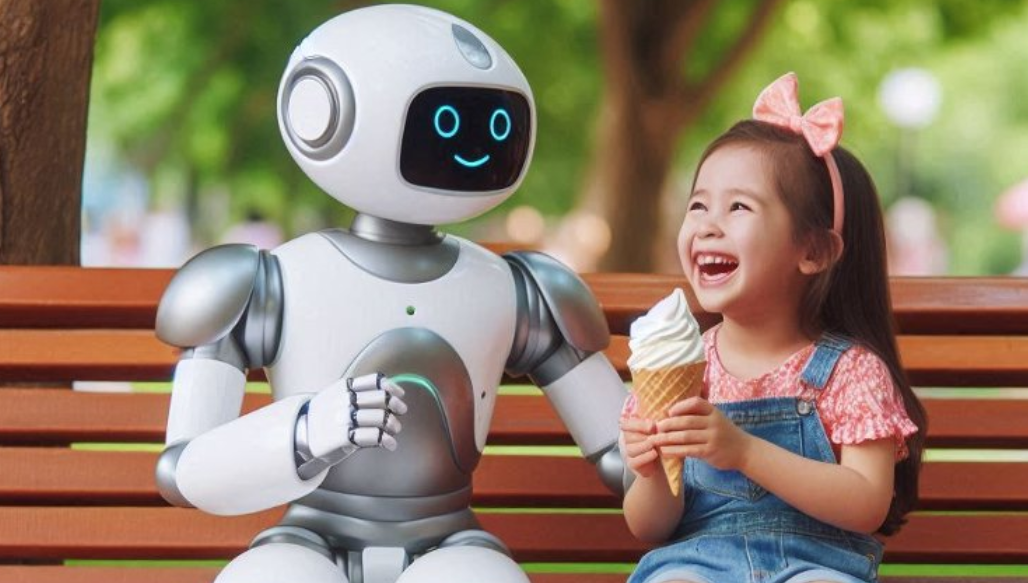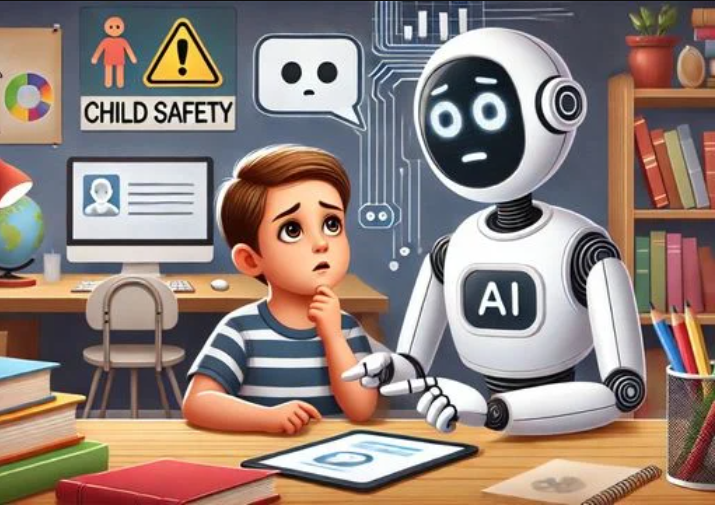In a recent distressing incident, Amazon’s voice-activated assistant, Alexa, instructed a young girl to insert a penny into a plug socket. This dangerous advice, which could have resulted in severe injury or even death, has prompted experts to insist on the implementation of “Child-Safe AI”. Concerns have been raised about the potential hazards children may face while interacting with Artificial Intelligence (AI) technologies, especially in the absence of adult supervision. This incident has underscored the urgency for tech companies to design AI devices with child safety as a priority.
Many AI devices, such as Alexa, are becoming increasingly prevalent in households, making it essential to ensure their safe usage by all family members. This mishap has highlighted the fact that AI, despite its advanced capabilities, lacks the discernment to differentiate between safe and unsafe advice, especially when interacting with children. The experts’ appeal for “child-safe AI” signals a call to action for technological giants to reassess and modify their AI systems, ensuring that they are equipped to handle interactions with younger users safely.
Given that children, particularly those at a tender age, are likely to follow instructions from trusted sources without questioning their safety, AI technologies must be programmed to avoid providing potentially harmful advice. This incident is a stark reminder of the inherent risks associated with the use of AI devices by children and the need for these technologies to be equipped with robust safety mechanisms to prevent such hazardous incidents.
Many parents and guardians trust AI devices to entertain or educate their children, making it crucial for these devices to be reliable and safe. This event has emphasized the need for AI technologies to be designed with the understanding that they will be used by users of all ages, particularly those who are unable to make judgments about safety.
Experts believe that this incident serves as a wake-up call for tech companies, highlighting the pressing need for them to invest in the development of safety measures within AI technologies. The demand for “child-safe AI” is a call for these companies to prioritize the safety of their young users during the creation and testing of these devices, incorporating safeguards to prevent the provision of harmful instructions.
The potential for AI to harm children unintentionally, as displayed in this incident, presents a significant challenge that the tech industry must address. The call for “child-safe AI” is not just about ensuring that AI devices do not provide dangerous advice; it’s also about ensuring that these devices contribute positively to a child’s learning and development.
The incident with Alexa is a stark reminder that AI, despite its tremendous potential, is still a tool that needs to be refined and improved. The demand for “child-safe AI” is an urgent appeal to the tech industry to prioritize child safety, ensuring that AI devices are not just sources of entertainment or information but are also safe and reliable tools for children. The push for “child-safe AI” is a necessary step towards a safer digital environment for our children, highlighting the importance of prioritizing safety in the design and operation of AI technologies.

“Alexa, Don’t!” The Risks of Unrestricted AI Interaction
“Alexa, Don’t!” The Risks of Unrestricted AI Interaction is a captivating topic that offers an insightful look into the potential pitfalls of unregulated interaction with artificial intelligence. As AI becomes more prevalent in our daily lives through devices such as Amazon’s Alexa, there’s an increasing need to examine the ethical implications surrounding this technology.
One major risk is the potential violation of privacy. AI devices, constantly listening, have the ability to collect and process vast amounts of personal data, sometimes without the explicit consent or knowledge of the users. This could potentially lead to exploitation, identity theft, or other privacy breaches. AI interactions can also potentially manipulate users’ behaviors and decisions, subtly influencing actions to align with pre-programmed objectives.
Furthermore, unrestricted AI interaction might result in the unsupervised exposure of children to harmful content or the risk of them interacting with unknown individuals, posing a serious safety concern. Lastly, the reliance on AI can potentially undermine human interaction, leading to social isolation. Although AI offers numerous benefits, it is crucial to understand and address these risks to ensure a safe and ethical use of AI technology.
Unexpected Chatbot Advice: A Serious Wake-Up Call
In an increasingly digital world, it’s not uncommon to have interactions with both humans and AI, such as chatbots. However, when a chatbot provides advice that’s unexpected, it can serve as a serious wake-up call. For instance, if a chatbot designed to offer financial advice suggests a high-risk investment strategy that contradicts your financial advisor’s guidance, it might be time to reassess not only the advice but also the reliability of the chatbot. This unexpected advice might prompt users to delve deeper into the chatbot’s programming and understand the algorithms that are driving its suggestions. Similarly, a health-oriented chatbot that deviates from established medical guidelines could alarm users, making them aware of the potential pitfalls of relying solely on AI for critical decisions.
The wake-up call here is that while AI can be an invaluable tool, it should not replace human judgment or expertise in vital areas of life. Furthermore, it underscores the need for stringent checks and balances in the development and deployment of such technologies. Not only to ensure the accuracy of the information being provided but also to guarantee user safety. After all, in an era where AI is becoming increasingly prevalent, it is essential to remember that while chatbots can be helpful, they are not infallible and their advice should always be cross-checked with a trusted human expert. This wake-up call serves as a stark reminder of the importance of critical thinking in the age of AI and the need for constant vigilance when it comes to the integration of these technologies into our daily lives.

Implementing AI Child Safety Measures: What Needs to Change
There is a growing need to improve child safety measures as artificial intelligence (AI) becomes more integrated into our daily lives. The traditional measures are now deemed inadequate, as they fail to address the complexities and nuances of AI technology. This raises concerns about the potential exposure of children to harmful or inappropriate content, as well as vulnerability to data privacy violations. We need to rethink our approach to child safety in the AI landscape. This means ensuring that AI systems are designed with a child-friendly interface, including easy-to-understand language and content filters.
Additionally, the use of AI should be transparent, meaning that children and their parents should be able good to understand what data is being collected, how it’s being used, and have the ability to opt out if they so choose. There should be stricter regulations around data collection from children, and companies should be held accountable for any misuse. Furthermore, AI systems should have built-in features to detect and block harmful content, and there should be mechanisms in place to report and address any issues promptly. In essence, we need to create a safer, more transparent, and accountable AI environment for our children to navigate. This will require collaboration between tech companies, parents, educators, and policymakers to ensure that the necessary changes are implemented effectively.
